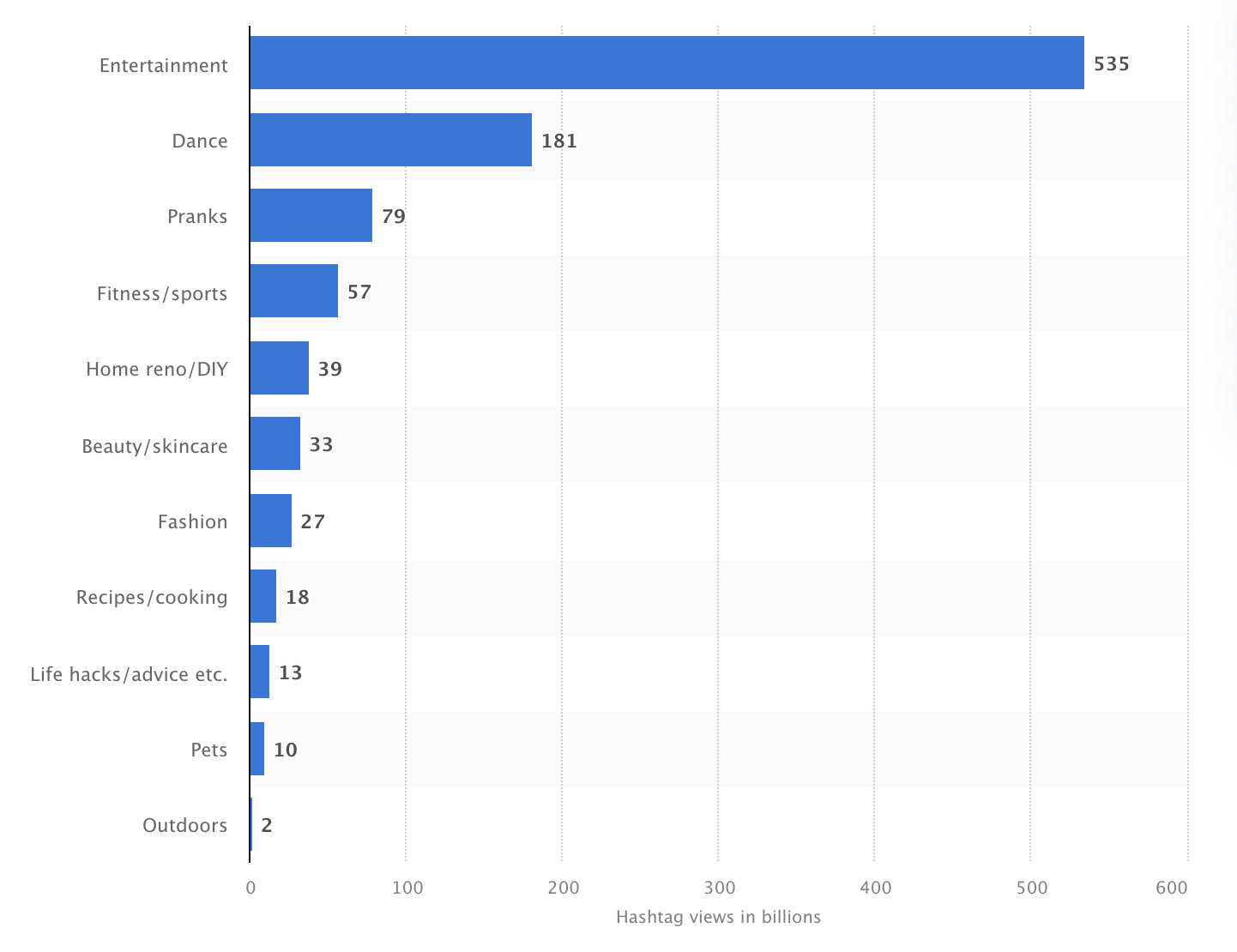Personal Notes on Tik Tok
It is entertaining (in the sense that what it shows you triggers an emotional response)
Why do we go after entertaining things?
What hormones get released after watching tik-tok and what function do they originally serve? i.e. what are we short-circuiting?
This researcher found that watching a video about a young boy with terminal cancer caused a release in oxytocin (hormone associated with empathy).
What are the basis vectors of human emotion and which one do we tend to pursue the most?

Entertainment is the first category by far, followed by dance, pranks, fitness. Entertainment is incredibly broad however.
Factor analysis for emotion classification uncovers two primary dimensions: valence (how negative and positive the experience feels) and arousal (how energized the experience feels):

It seems that the content that receives the most engagement lies on the upper quadrant (i.e. the most aroused state, no matter if the experience is unpleasant or pleasant).
From a survival perspective, it would seem one would favor high-energy state as opposed to low-energy ones.
Perhaps they are already included in some entertainment videos but pets seem to be lagging behind. It seems we are overall interested in content that depicts other humans. And when we are indeed amused by pet videos, they are often acting in an anthropomorphic fashion.
Laughter serves a social function, it signals cooperation (see this) and releases endorphins. Rather than being a means to achieve cooperation, humor seems now to have become an end in itself and we are able to eliminate the prospects of cooperation from the equation.
Other categories were dance, home renovation, beauty, etc...
René Girard would tell us dance is a remnant of rituals reenacting the mimetic crisis and preceding the sacrifice of the antagonistic, deified scape goat.
It seems that every aspect of human existence, whose goal is to make more of itself, is reflected in our digital lives. We pursue status to have access to a larger pool of potential mates and pass our genes.
The presentation of self in the online world: Goffman and the study of online identity (published 2013)
The key finding of the research is that, contrary to engaging with the process of whole persona adoption, participants were keen to re-create their offline self online, but engaged in editing facets of self. This emphasizes the key premise in Goffman’s work that, when in "front stage" people deliberately chose to project a given identity. It is concluded that Goffman’s original framework is of great usefulness as an explanatory framework for understanding identity through interaction and the presentation of self in the online world. Equally, the online environment, with its enhanced potential for editing the self, can offer opportunities to contribute to the further development of the Goffman framework.